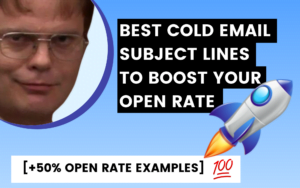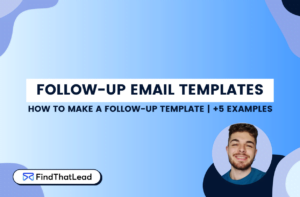Paid ads and content development are increasingly vital components of digital marketing. Although high-quality traffic channels like Facebook, Instagram and Google are defining the way companies invest in online marketing, content marketing continues to be a great way to project long-term growth for your business.
So what are paid platforms?
What is content marketing?
How can you turn these channels and tools into revenue for your company?
In this interview with Jack Paxton, founder of Top Growth Marketing and cofounder at VYPER.io and HYAX.com, we ask one of the top experts on paid advertising and growth marketing to talk online ads, backlinking and SEO.
Over the last eight years, Jack has spent over 150 million dollars on growth marketing campaigns, bringing in revenues of 500 million for his clients. He’s made eCommerce stores increase their revenues fivefold in 6 months and is well versed in all things digital marketing.
Time Stamped Keynotes
[0.38]- Gerard introduces Jack Paxton.
[3.17]- So, Jack, how important is backlinking? Jack: Very important. You have to pay for traffic somehow, whether it’s paying for ads or paying with time. So backlinking, SEO and content marketing is time-consuming, but it definitely builds.
[4.08]- Backlinking is a very important source of traffic for SaaS companies and can give you more control over your investment than ads funnelled through Facebook.
[4.26]- Organic traffic is beautiful once you get it flowing.
[4.42]- Gerard: So, what is Vyper? Vyper helps people give away viral content and reward programs. Vyper.ai is mostly used by eCommerce brands trying to grow their email list or SaaS companies.
Launching a new company: How to plan your marketing investment
[7.29]- Gerard asks Jack: If you were launching a new company and had a thousand dollars, how would you invest that money?
[8.37]- First off, I would look into potential partnerships and try to generate joint blog posts, joint emails, joint webinars and joint trainings. That’s free.
[8.57]- Then I would probably spend a thousand dollars promoting those partnerships, and try to build that audience.
[9.10]- And then once I have an audience and have delivered a bunch of value, I would sell users on to exclusive feed access or pre-launch access.
[9.46]- For SaaS apps that are focusing on marketing, you have to think about the type of customer you want to reach out to.
[10.00]- After you have determined that, target interests or keywords that your app solves for that particular customer.
[10.21]- Facebook, Instagram, and Google. Those are the highest-quality channels.
[10.40]- B2B and SaaS is probably best done on Google, but to get people to sign up for webinars, courses or summits, the visuals that Facebook and Instagram give you represent better deals.
[11.00]- Gerard comments that AppSumo is great at driving B2C sales for freelancers and SaaS.
[12.00]- Jack: The outcome of spending 1000 dollars on Facebook Ads and Google Ads is delivering value and getting new users on your email list.
[12.12]- If you’re just getting started, you could use something like MailChimp and not even have to pay for your email service provider.
[12.21]- Delivering value is key, as you need users to open their emails and engage with the content.
[12.30]- To increase your open rate, you can announce that you are sending one person a free account. During training or in your webinar, you can say: “Hey, I’m going to give out three free six-month accounts, make sure you open the first email I send you.”
[13.04]- Give people value and tell them who received the free accounts. Thank them for attending and offer them an account with reduced rates or discounts for six months.
[13.45]- If you’ve got the users and a bad product, it’s not going to work; if you’ve got a good product and new users, it’s not going to work.
[14.00]- The product is more important, especially at the start because of the value of word-of-mouth. So focusing on the product first is definitely the way to go.
[14.25]- Gerard comments on the importance of product, product, product vis-a-vis a sales-first approach.
[15.11]- Jack: Product pricing is definitely one of the hardest aspects of any business.
[16.09]- A few key things to keep in mind:
1) You have to have something to upsell, especially if you are charging a low fee for your product.
2) Think about your variable costs. If you are sending a bunch of emails or hosting a lot of traffic, you can’t charge a low fee purely because of the backside costs involved.
Ask yourself: What are my variable costs per account? That’s your baseline, so now where do you go from there?
[17.14]- Gerard asks Jack about the impact of COVID-19 on online commerce. Jack: The coronavirus pandemic has driven e-commerce, sales tools, and boosted interest in SaaS tools.
[17.20]- The sales cycle has changed. Email, LinkedIn and Zoom meetings are now driving business interactions.
[18.10]- Gerard adds that GDPR has taken a major hit in Europe and Spain during the coronavirus pandemic, transforming online commerce and outbound marketing into major sales outlets for the first time.
[18.40]- Jack: 80% of people are now willing to try a new brand or try a new service. If you are a new brand, now is the time to disrupt larger competitors.
[20.06]- Gerard asks Jack: Have your Facebook Ads and Google Ads gone up or down as a result of the pandemic?
[20.20]- Some of our clients had their best results in April, May, and June; it was a golden period.
[21.00]- Following that, spending became more restricted, and then ad bans and restrictions were imposed during the U.S. elections; especially on Facebook.
[22.58]- We advised most people to decrease their budgets in that period, and now things are starting to ramp up with Black Friday, Cyber Monday, and holiday shopping.
Backlinking and SEO optimization: Three easy steps
[24.29]- SEO is all about balance. The first component is finding good partners and becoming part of a network. Try to:
- start up guest post exchanges
- introduce content marketers to each other
- get good content and backlinks published
- help each other raise everybody’s domain ranking
[25.00]- You need to be careful, though, because you need to be wary of Google banning or blocking your content.
[25.36]- Remember, the more personalised the content you publish, the happier Google is.
[25.44]- The second component behind SEO is that the quality of the content is very important. Here are a few tips:
- link to –and be linked by– high-quality websites
- minimum 1500-word posts
- don’t add too many links
- add value
- make sure people are actually reading your content
[26.28]- The third component is keyword research and on-page SEO terms. Remember to:
- find the right keywords to create content around
- solve the query people look up on Google
- get links from relevant sites for that query
[26.53]- For instance, if you are writing a blog post on how to grow Instagram followers, you want to get links in other blog posts or websites that focus on Instagram content. Google sees those links as being relevant.
[28.18]- Gerard comments on the importance of putting out authentic, compelling, and first-rate content. Businesses have to grow their presence organically, creating content that is honest and full of love –there’s no shortcut.
[30.06]- Jack: Definitely. Neil Patel is always pushing the user over the algorithm, which is something good to keep in mind.
[30.21]- There are people who find ways of cheating the system, but in the end, it always catches up to them. If you want to have something that’s steady and refers you traffic, it’s a step-by-step process; it’s a staircase.
For those who want to get in touch with Jack directly, you can email him at jack@hyax.com.
He also has a load of content and guides as well as webinars and seminar recordings on top-growth marketing available on Youtube.
For SEO-related content, check out his blog at Viper.ai.







 BONUS:
BONUS: The Challenge: Join this free course and I guarantee that after 5 days you will have the necessary skills to start generating B2B clients Growth Hacking and Prospecting techniques.
The Challenge: Join this free course and I guarantee that after 5 days you will have the necessary skills to start generating B2B clients Growth Hacking and Prospecting techniques.